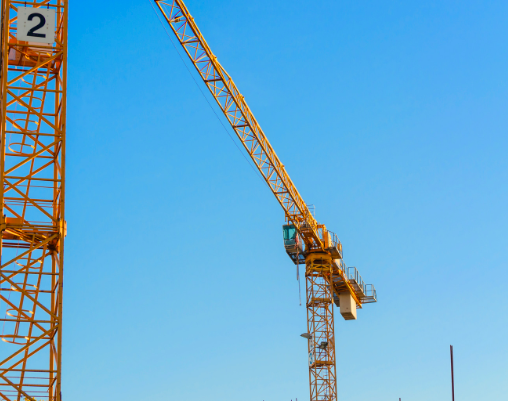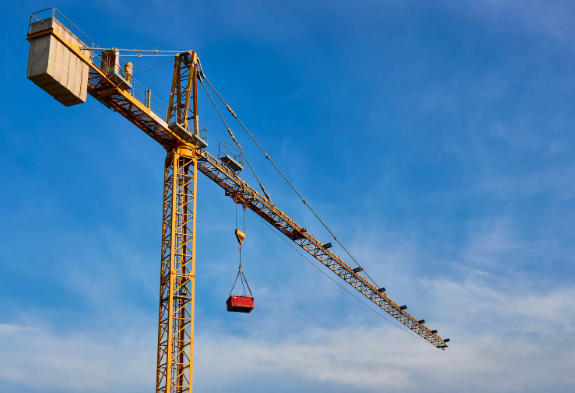Last Updated on November 25, 2022 by mdmtool
Many types of lifting equipment are use for lifting load in various settings, each with its own advantages and disadvantages. Two of the most common lifting devices are hoists and cranes. Both hoists and cranes can be used for various purposes, but critical differences between them should be considered before purchasing.
What Is A Hoist?

A hoist is a device used for lifting or lowering a load using a drum or lift wheel around which a rope or chain wraps. It may be manually operated, electrically, or pneumatically powered. The load is attached to the hoist using a hook, slings, or chain.
What Is A Crane?

A crane is a machine used to lift and lower heavy loads. Cranes are also used for moving these loads from one place to another. Cranes are classified into two main types: mobile and fixed. Mobile cranes can be moved from one location to another, while fixed cranes are permanently mounted on a foundation.
What Is The Difference Between Hoist And Care?

- Design: Hoists are designed for lifting smaller loads, while cranes are better suited for heavier items.
- Method: Hoists typically use a chain or cable to raise and lower the load, while cranes utilize a system of pulleys and levers.
- Cost: Hoists are less expensive than cranes and can be used in more confined spaces.
- Versatility: Cranes offer more versatility in lifting capacity and can be used for indoor and outdoor applications.
- Use: Hoists are best suited for small and indoor applications, while cranes offer more versatility for larger loads and outdoor settings.
Types Of Hoists
- Electric Hoists: The most common type of hoist, electric hoists, use an electric motor to lift and lower a load.
- Pneumatic Hoists: A less common type of hoist, pneumatic hoists use compressed air to lift and lower a load.
- Hydraulic Hoists: Another less common type of hoist, hydraulic hoists use hydraulic fluid to lift and lower a load.
- Manual Hoists: Manual hoists are operated with a hand chain or lever. The hand chain is used to lower and raise the load while the lever engages and disengages the load brake. Manual hoists are available in both light-duty and heavy-duty mods.
- Pneumatic Hoists (Air Hoists): Pneumatic hoists use air pressure to raise and lower the load. They are best suited for applications where electricity is unavailable or sparks from an electrical hoist could be hazardous. Pneumatic hoists are often used in dangerous environments, such as chemical plants, oil refineries, and mines.
- Chain Hoists: A chain hoist is a device that uses a chain to lift or lower a load. A chain hoist consists of two parts, a chain, and a ratchet. A ratchet is used to tighten the chain around the bag. The load is attached to the chain with a hook.
- Wire Rope Hoists: These hoists use a wire rope to lift the load. The advantage of this type of hoist is that it can be used for lifting heavy loads.
Types Of Cranes

- Top Running Crane: In this type of crane, the bridge carrying the trolley or hoist is an integral part of the building structure. The crane moves along rails that are fastened to the upper flanges of the main girders.
- Under Running Crane: In this type of crane, the bridge carrying the trolley or trollies runs on an overhead track, similar to a monorail. The bridge may be a single-girder or double-girder design. The crane is supported by the building or structure at two end trucks. The end trucks ride on wheels mounted to the building roof steel or runway beam support. The runway beams are supported on columns, and the crane operates along these runways.
- Overhead or Bridge Crane: An overhead crane, commonly called a bridge crane, is a type found in industrial environments. An overhead crane consists of a bridge supporting a trolley, which carries a lifting device.
- Gantry Crane: A crane whose bridge carrying the trolley or trollies is rigidly supported on two or more legs running on a rail or rails in the floor. The terms “bridge crane” and “gantry crane” are often used interchangeably.
- Monorail Crane: The crane that has only one beam is called a monorail crane. The trolley rides on this beam while the hoist is suspended from the trolley. This crane is recommended for light loads and where headroom is limited.
What To Consider When Choosing Hoisting Or Lifting Equipment?
Many different types of hoisting and lifting equipment are available on the market. When choosing the right kind of equipment for your needs, it is essential to consider the following factors:
- The weight of the load you need to lift
- The height you need to lift it to
- The distance you need to move it
- The type of material you need to lift
- The environment you will be using the equipment in.
FAQs
Q: Is it a crane hosting machine?
A: No, a crane is not a hoisting machine. A crane is a lifting machine that uses arms and wire cables to move heavy objects from one place to another.
Conclusion
The main difference between a hoist and a crane is that a hoist is a lifting device that uses ropes and pulleys to raise or lower a load, while a crane is a machine that uses cables and winches to lift heavy objects. Cranes are generally more versatile than hoists and can be used for many different purposes, such as construction, mining, and transportation.





